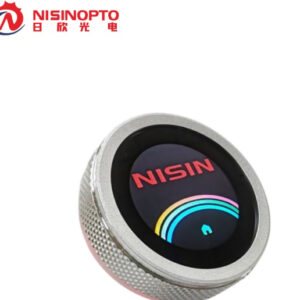TFT LCD modules are widely used in a variety of electronic applications, from consumer gadgets to industrial equipment. One of the key challenges in using these modules, especially in portable or battery-powered devices, is managing power consumption. Efficient power usage not only extends the battery life of devices but also ensures sustainable operation, especially in high-demand applications. この記事では, we’ll explore how to optimize TFT LCD modules for low power consumption and why it matters for your business and projects.
1. Choose the Right TFT Display for Your Application
The first step in optimizing power consumption is selecting the appropriate TFT display. Different TFT LCD modules offer varying levels of power efficiency. When sourcing TFT LCD modules, make sure to choose a display that aligns with your application’s requirements, such as:
-
解決: Higher resolution displays typically consume more power. If your application doesn’t require ultra-high-definition visuals, opting for a lower resolution display can save power.
-
Display Size: Larger TFT displays naturally consume more power. Consider the size that best fits your design needs.
-
Backlight Technology: Modern TFT displays often use LED backlighting, which can be more energy-efficient compared to traditional CCFL backlights. Choosing displays with energy-efficient backlighting can reduce power consumption significantly.
2. Adjust Brightness and Contrast Levels
One of the most effective ways to reduce power consumption is by adjusting the brightness and contrast levels of the display. TFT LCD modules can consume a significant amount of power when the brightness is set too high. Consider the following options:
-
Automatic Brightness Adjustment: Implement an automatic brightness adjustment system where the brightness of the TFT LCD module adjusts based on ambient light conditions. This reduces the energy used when the display is not in use or when the surroundings are bright.
-
Manual Control: If automatic adjustments are not feasible, ensure users can manually adjust brightness and contrast for optimal power savings.
3. Use Power Saving Modes
Most TFT LCD modules come with built-in power-saving features, such as sleep modes or low-power states when the display is not in use. These features can drastically reduce power consumption without compromising functionality. Some practical steps include:
-
Sleep Mode: When your device is inactive for a period, the TFT LCD module can enter a sleep or standby mode that reduces power consumption by dimming or turning off certain functions of the display.
-
Partial Screen Updates: Some TFT LCD modules offer partial screen refresh capabilities, allowing only parts of the screen to be updated, which consumes less power.
4. Select Low-Power TFT LCD Module Components
Working with the right TFT LCD module manufacturers can make a huge difference in power efficiency. Many manufacturers offer specialized low-power components designed to work together to maximize energy savings. Look for:
-
Low-Power Controllers: Some TFT LCD module manufacturers offer specialized controllers that are optimized for lower power consumption.
-
Efficient Power Management ICs: Use efficient power management integrated circuits (ICs) that can help regulate power distribution to the TFT LCD module, minimizing unnecessary energy usage.
5. Implement Dynamic Voltage and Frequency Scaling
Dynamic Voltage and Frequency Scaling (DVFS) is an advanced technique used to optimize the performance and power consumption of TFT LCD modules. By adjusting the voltage and frequency of the display based on workload and power needs, you can significantly reduce energy usage when full performance isn’t necessary. This technique can be especially effective in devices with fluctuating workloads.
6. Optimize the System Design
When integrating TFT LCD modules into a larger system, consider the overall design of your power supply. Efficient power design can ensure that the display receives the appropriate voltage and current while minimizing waste. Here are some considerations:
-
Power Efficiency of Other Components: Ensure other system components, such as processors or sensors, are also power-efficient. This ensures that the overall device doesn’t drain the battery unnecessarily, leaving more power for the TFT display.
-
Power Supply Conversion: Use high-efficiency power supply circuits to ensure minimal loss during power conversion.
7. Monitor and Test Power Consumption
To optimize TFT LCD module price and ensure that your devices are operating at peak efficiency, consistently monitor the power consumption of your TFT LCD module. This can be done using power measurement tools to observe how adjustments to brightness, 対比, or power modes affect overall energy usage. Regular testing helps identify areas where further power savings can be achieved.
Optimizing TFT LCD modules for low power consumption is a crucial consideration in today’s electronic products, particularly for portable and battery-operated devices. By choosing the right display, adjusting brightness, using power-saving modes, and selecting efficient components, you can significantly reduce energy consumption without compromising performance. As TFT LCD module manufacturers continue to innovate, more solutions for energy-efficient displays will become available, making it easier to create power-conscious devices. Whether you’re developing consumer electronics or industrial machinery, taking these steps will help you balance performance with sustainability.




